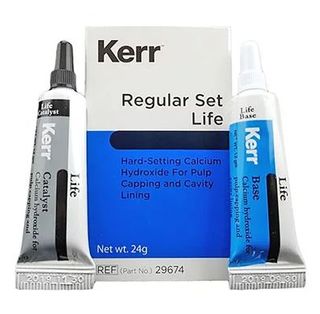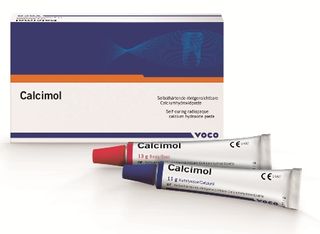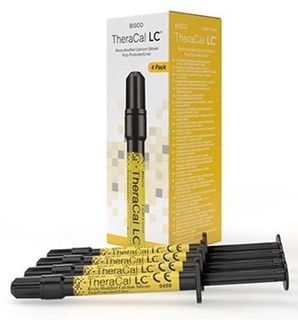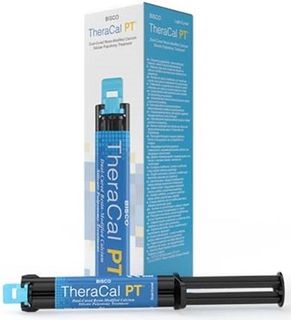- Home /
- RESTORATIVE PRODUCTS /
- LINERS /
- TheraCal LC syringe 1g
Products
- ARTICULATING SYSTEMS
- BLEACHING PRODUCTS
-
BURS
- BLUWHITE DIAMOND BURS
- BUR ACCESSORIES
- EDENTA STEEL BURS
- IMPLANT DRILL & BUR KITS
- IMPLANT DRILLS & BURS
- INTENSIV CROWN CUTTING BURS
- INTENSIV DIAMOND BURS
- JET CARBIDE BURS
- LABORATORY BURS
- NORTH BEL CARBIDE BURS
- NORTH BEL DIAMOND BURS
- NSK PICO BURS
- ORAL SURGERY BURS
- ORTHO STRIPS
- PERFECTION PLUS STEEL BURS
- THOMAS STEEL BURS
- WAVE CARBIDE BURS
- COTTON PRODUCTS
- DENTURE PRODUCTS
- DIGITAL DENTISTRY
- ENDODONTIC PRODUCTS
- EQUIPMENT
- FINISHING & POLISHING PRODUCTS
- HANDPIECES
- IMPLANT SPECIALIST
- IMPRESSION MATERIALS
-
INFECTION CONTROL
- AUTOCLAVE POUCHES & REELS
- BIBS & BIB HOLDERS
- CLEANING & DISINFECTION
- COMPLIANCE
- DISPOSABLE TRIPLEX SYRINGES
- DRAPES, COVERS & GOWNS
- EYE & FACE SHIELDS
- GLOVES
- HAND CARE
- HANDLING & MAINTENANCE
- IMPRESSION DISINFECTANTS
- MASKS
- PROTECTIVE SLEEVES & COVERS
- SOAKING TANKS
- SUCTION SYSTEM CLEANERS
- SURFACE CLEANING& DISINFECTION
-
INSTRUMENTS
- DIAGNOSTIC INSTRUMENTS
- ENDO HAND INSTRUMENTS
- EXTRACTION FORCEPS
- HANDLING & MAINTENANCE
- LABORATORY INSTRUMENTS
- MIRRORS
- ORTHODONTIC INSTRUMENTS
- PERIODONTIC INSTRUMENTS
- RESTORATIVE INSTRUMENTS
- SCISSORS
-
SURGICAL INSTRUMENTS
- ANAESTHETIC SYRINGES
- ARTERY & TISSUE FORCEPS
- BONE PRODUCTS & FILES
- ELECTROCAUTERY
- ELEVATORS
- LUXATING INSTRUMENTS
- MEASURING INSTRUMENT
- MOUTH PROP
- NEEDLE HOLDER
- OSTEOTOMES & SINUS LIFT
- PERIOTOMES & PERIOSTEAL
- RETRACTORS
- ROOT TIP PICK
- SCALPEL BLADES & KNIVES
- SCISSORS
- SURGICAL CURETTE
- TISSUE FORCEPS
- TISSUE PUNCH
- LABORATORY PRODUCTS
- MOUTHGUARD MATERIAL
- OCCLUSION PRODUCTS
- OFFICE PRODUCTS
- ORAL CARE PRODUCTS
- ORTHODONTIC PRODUCTS
- RESTORATIVE PRODUCTS
- SUCTION PRODUCTS
-
SURGICAL PRODUCTS
- ABSORBENT PRODUCTS
- DEMONSTRATION MODEL
- DRAPES, COVERS & GOWNS
- HANDLING & MAINTENANCE
-
IMPLANT PRODUCTS
- ABUTMENT HOLDERS
- BENEX EXTRACTION KIT
- BONE MILLS & MALLETS
- BONE SPREADING
- GRAFT & MEMBRANE INSTRUMENTS
- GRATFING & MEMBRANE MATERIAL
- IMPLANT CEMENTS
- IMPLANT DRILL & BUR KITS
- IMPLANT DRILLS & BURS
- IMPLANT DRIVER TIPS
- IMPLANT MAINTENANCE
- IMPLANT RESCUE
- IMPLANT TORQUE WRENCH
- MEASURING INSTRUMENT
- OSSEOINTEGRATION DEVICE
- OSSEOUS COAGULUM TRAP
- OSTEOTOMES & SINUS LIFT
- RETRACTORS
- SCREWS, MESH & TACKS
- IRRIGATION & AIRWAY TUBING
- METAL DISHES
- ORAL SURGERY BURS
- SURGICAL ASPIRATORS
- SURGICAL INSTRUMENTS
- SURGICAL UNITS & HANDPIECES
- SUTURES & WOUND CLOSING
- TEETH
- THERMOFORMING PRODUCTS
- WAX PRODUCTS
- XRAY PRODUCTS
TheraCal LC syringe 1g
Description
TheraCal LC®
TheraCal LC is a light-cured, resin-modified calcium silicate. Its unique apatite stimulating ability makes it ideal for direct and indirect pulp capping and as a protective liner.
Resin-Modified Calcium Silicate Pulp Protectant/Liner
TheraCal LC is a light-cured, resin-modified calcium silicate filled liner designed for use in direct and indirect pulp capping and as a protective liner under composites, amalgams, cements, and other base materials. It can be used as an alternative to calcium hydroxide, glass ionomer, RMGI, IRM/ZOE and other restorative materials. TheraCal LC performs as a barrier and protectant of the dental pulpal complex.
TheraCal LC’s precise placement allows its use in all deep cavity preparations. The light-cured set permits immediate placement and condensation of the restorative material. Its proprietary formulation allows for a command set with a light curing unit while maintaining ease of placement due to thixotropic properties. The proprietary hydrophilic resin formulation creates a stable and durable liner.
Unique Benefits:
- Calcium release stimulates1* hydroxyapatite and secondary dentin bridge formation2,3
- Alkaline pH promotes healing and apatite formation2,4
- Significant calcium release1 leads to protective seal5,7,8
- Protects and insulates the pulp5,6
- Moisture tolerant1 and radiopaque – can be placed under restorative materials and cements
Clinical Significance:
- The proprietary formulation of TheraCal LC consists of tri-calcium silicate particles in a hydrophilic monomer that provides significant calcium release* making it a uniquely stable and durable material as a liner or base
* Bisco has, on file, the calcium release data for TheraCal LC.
1. Gandolfi MG, Siboni F, Prati C. Chemical-physical properties of TheraCal, a novel light-curable MTA-like material for pulp capping . International Endodontic Journal. 2012 Jun;45(6):571-9.
2. ADA definitions for direct and indirect pulp capping at: www.ada.org/en/publications/cdt/glossary-of-dental-clinical-and-administrative-ter
3. Apatite-forming Ability of TheraCal Pulp-Capping Material, M.G. GANDOLFI, F. SIBONI, P. TADDEI, E. MODENA, and C. PRATI J Dent Res 90 (Spec Iss A):abstract number 2520, 2011 (www.dentalresearch.org)
4. Okabe T, Sakamoto M, Takeuchi H, Matsushima K (2006) Effects of pH on mineralization ability of human dental pulp cells. Journal of Endodontics 32, 198-201.
5. Sangwan P; Sangwan A; Duhan J; Rohilla A. Tertiary dentinogenesis with calcium hydroxide: a review of proposed mechanisms. Int Endod J. 2013; 46(1):3-19
6. Selcuk SAVAS, Murat S. BOTSALI, Ebru KUCUKYILMAZ, Tugrul SARI. Evaluation of temperature changes in the pulp chamber during polymerization of light-cured pulp-capping materials by using a VALO LED light curing unit at different curing distances. Dent Mater J. 2014;33(6):764-9.
7. Cantekin K. Bond strength of different restorative materials to light-curable mineral trioxide aggregate. J Clin Pediatr Dent. 2015 Winter;39(2):143-8.
8. Mechanical Properties of New Dental Pulp-Capping Materials Over Time. M. NIELSEN, R. VANDERWEELE, J. CASEY, and K. VANDEWALLE, USAF, JBSA-Lackland, TX, , J Dent Res 93(Spec Iss A): 495, 2014 (www.dentalresearch.org)






